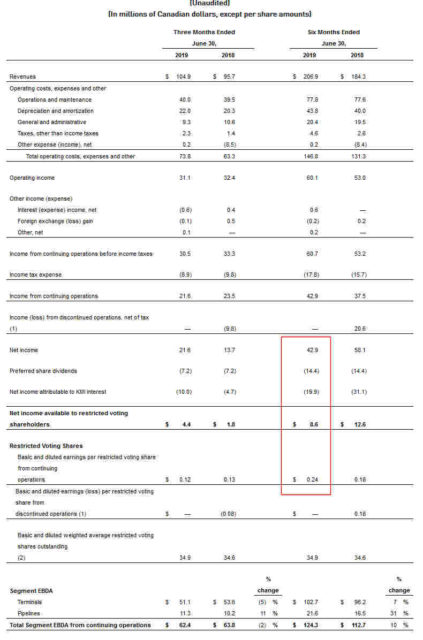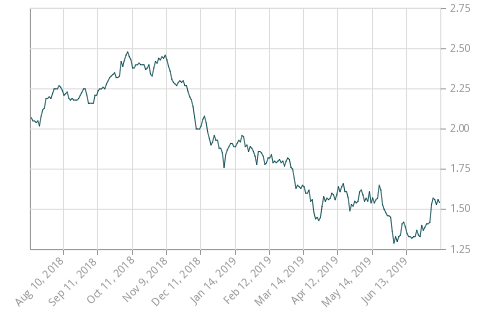Skimming the Q2-2019 financial results of Kinder Morgan Canada (TSX: KML) –
Entity is 30% owned by the public (roughly 35 million shares outstanding) while Kinder Morgan (USA) owns roughly 81 million shares.
Because the public only owns 30% of the operating entity, even if the company reports $10 million in earnings, the public effectively receives $3 million. The $7 million is a “minority” interest (of course, this is no longer a minority!).
When looking at the first half of the year, we have the following (and I have highlighted the relevant area in a box).
The entity is pleasantly profitable – $43 million in net income for the first half.
However, the preferred shareholders (entirely held by the public) get the first slice of income. Their take is $14.4 million. This leaves $28.5 million for the entire entity. Kinder Morgan’s slice is $19.9 million. This leaves $8.6 million left for the 34.9 million shares that are publicly trading on the TSX – about 24 cents per share for the half.
Do some quick math – 48 cents a year for a stock now trading at CAD$12, which is a net return of 4%. It’s obvious this isn’t strictly about income, there is some pricing potential in the assets.
The preferred shares are at around 5.6%, and also get priority when KML finds a buyer at an acceptable price for their Canadian assets. The CAD$550 million is a drag on KML’s balance sheet, but they are virtually first-in line (as KML got rid of most of their debt after the Trans Mountain Pipeline sale).
For the most part, the income stream is stable. There will be some reductions in 2020, but otherwise they will easily cover the preferred shares.
I bought some preferred shares in early June as a cash parking vehicle. This is a very low risk, low reward type situation where you can watch paint dry for a maximum upside of par – and in the meantime, you can clip your coupons.

